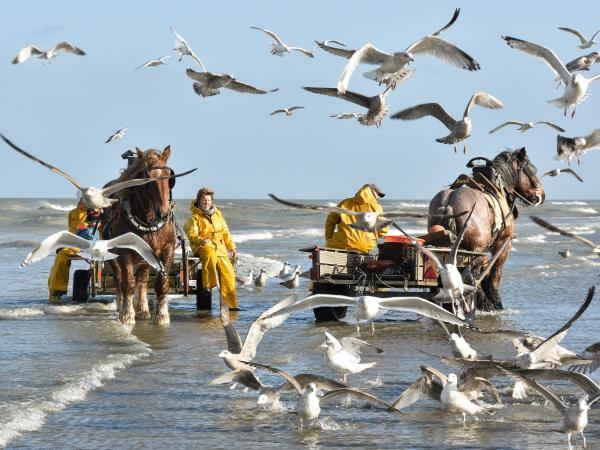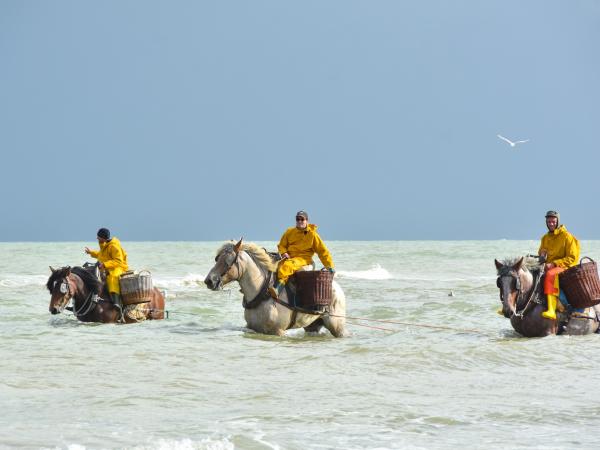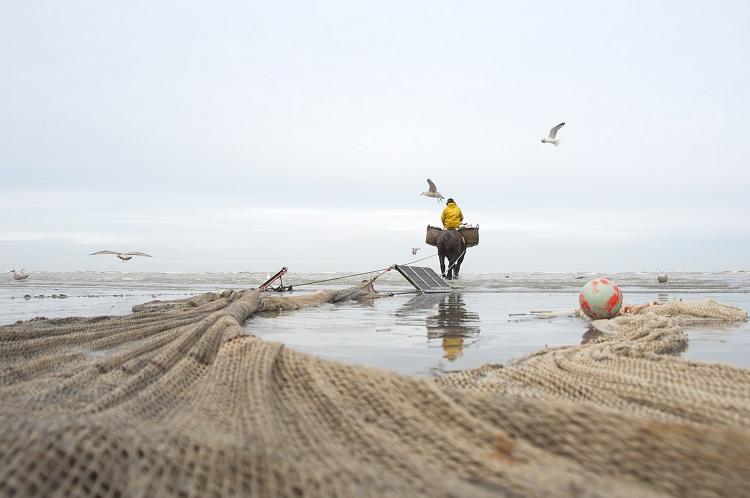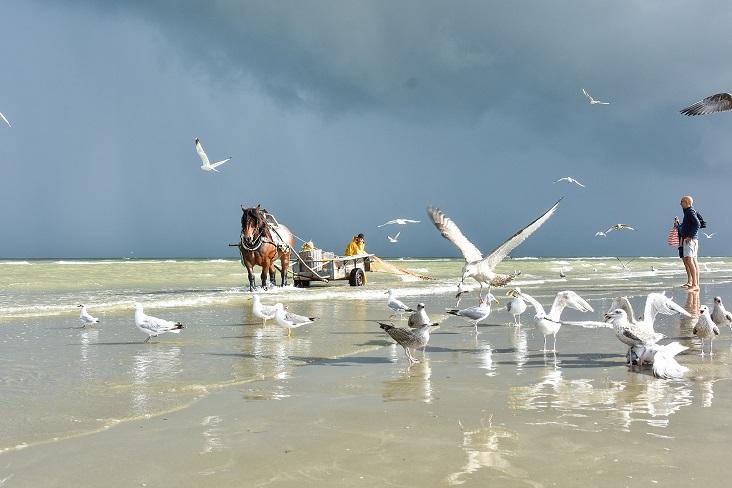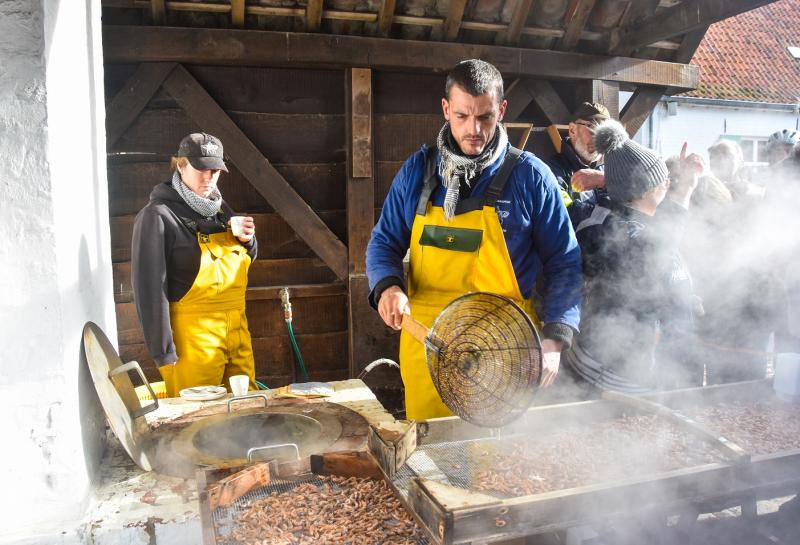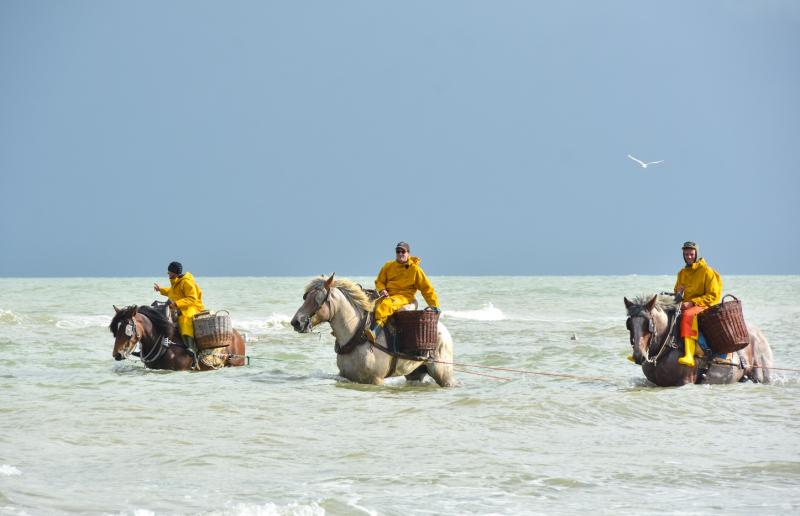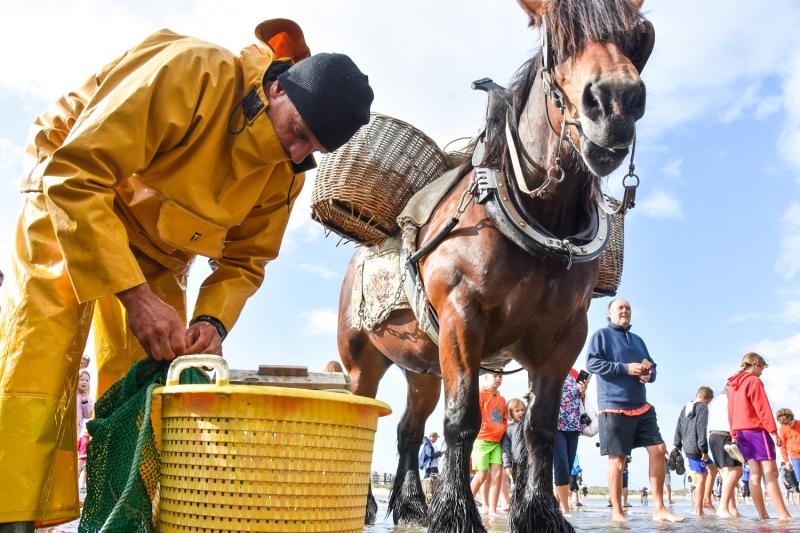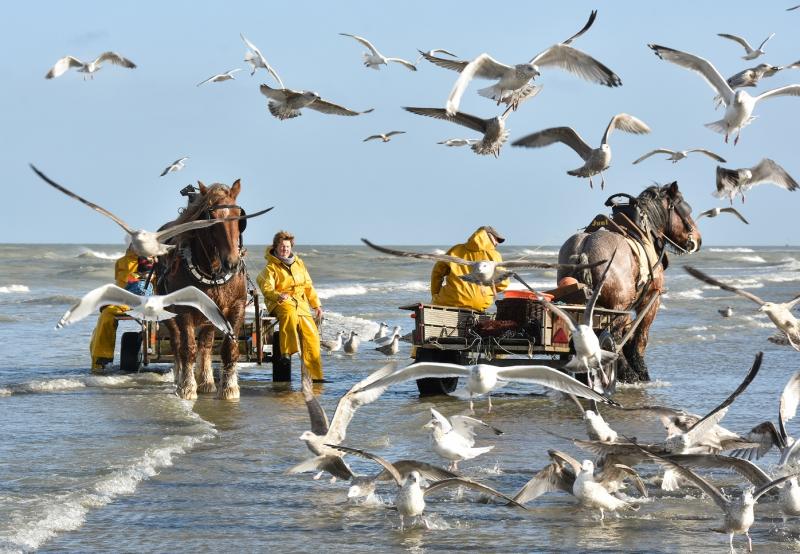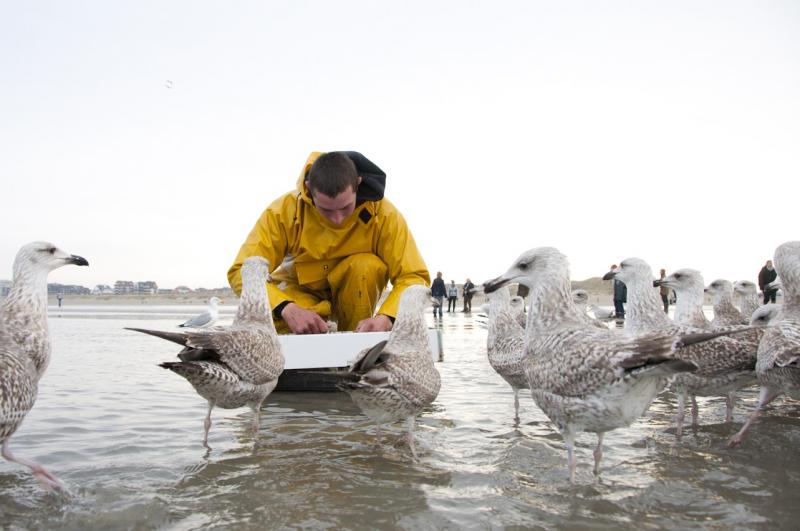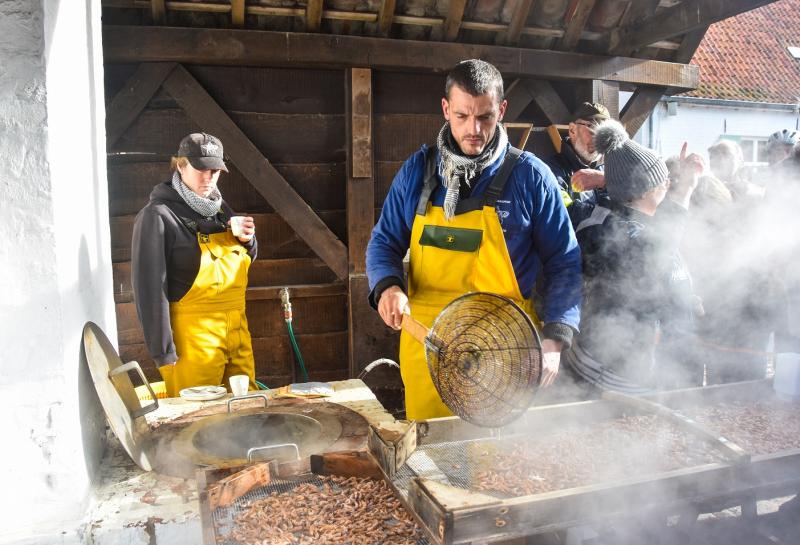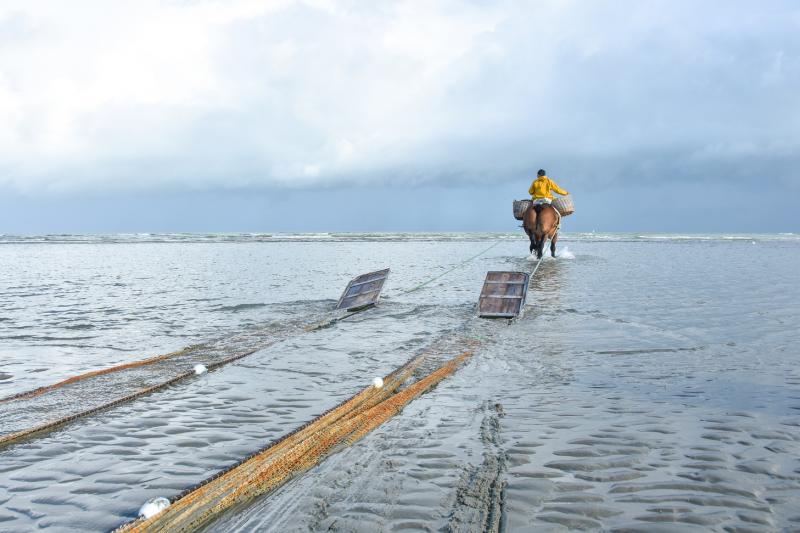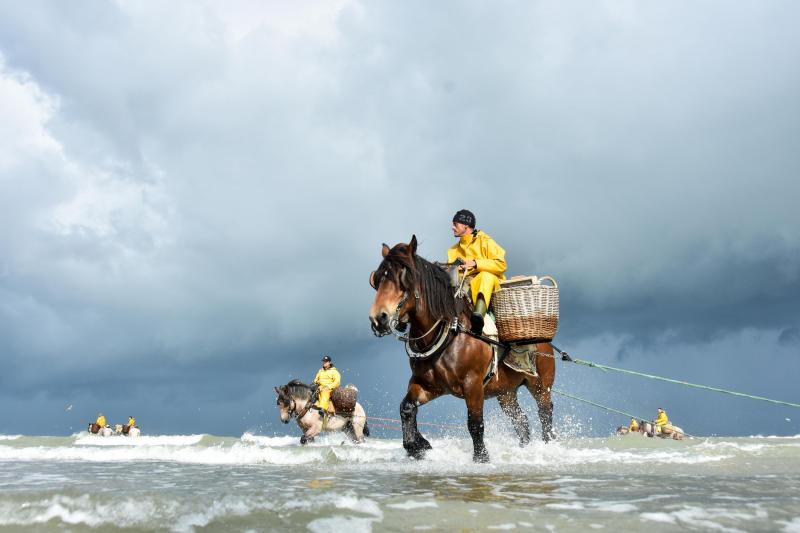Shrimp fishing on horseback is a form of traditional craftsmanship closely connected with nature: good knowledge of the sea, the sand strip and a high level of trust and respect for the horse are essential. Fishing for shrimp with a horse-drawn drag net in the shallow water is only possible on a flat, very gently sloping coastline. This is also the biotope in which the grey shrimp, Crangon crangon, is found in abundance.
The United Nations Educational, Scientific and Cultural Organization (Unesco) has added the shrimp fishermen on horseback of Oostduinkerke to the world list of intangible cultural heritage at its annual meeting in Azerbaijan in December 2013.
